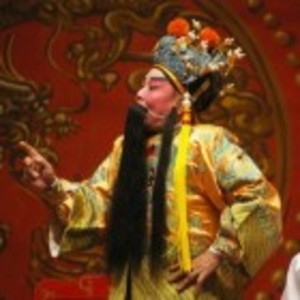
kawing921/Shutterstock.com
Cantonese Opera
1100s-Present Day
Introduction
Cantonese Opera is one of the main categories of Chinese opera. As a branch of the Chinese musical theatre tradition, Cantonese Opera shares many similarities with Chinese opera, including Peking Opera. This guide explores the history of Cantonese Opera, tracing its origins back to the Tang Dynasty in the 8th century. It then discusses the structure and style of the genre, and the musical differences from Western styles of opera.
Terminology
- Dynasty: a succession of rulers from the same family.
- Kunqu: one of the earliest forms of Chinese opera.
- Liuzhuzhi: the six-pillar system of set characters in Cantonese opera.
- Nanxi: an early form of Chinese opera.
- Tang Dynasty: an imperial dynasty of China that ruled from 618 to 907.
- The Five Methods: a system of practice defined for different parts of the body: body, hands, eyes, hair, and feet.
- The Four Skills: the training undertaken by performers in Cantonese opera. Chang (singing), Zuo (body movement), Nian (recitation or spoken acting), and Da (martial arts or acrobatics).
Key Dates & Events
- 712-755 - Emperor Tang founds the first opera troupe called ‘Pearl Garden’.
- 1658 - The first Temple Stage is built, specifically for Cantonese Opera performances.
- 1966-1976 - All opera in China is banned except for the eight Peking Model Operas, although Cantonese Opera still had a significant foothold in Hong Kong, which was still a dependent territory of the British Empire.
- 1980 - The Cantonese Opera Academy of Hong Kong opens.
- 1998 - The Hong Kong Academy for Performing Arts starts a part-time certification for Cantonese Opera.
- 2009 - Cantonese Opera is included on the UNESCO list of Intangible Cultural Heritage of Humanity.
- 2019 The Xiqu Centre in Hong Kong is opened.
Context & Analysis
Drama and Performance
History
The origins of Chinese Opera can be traced back as early as the Tang dynasty, when Emperor Tang founded the first troupe, during his reign in 712-755. Over the centuries, different forms of musical theatre and opera took shape, and different regions favored slightly different formulas or traditions. Cantonese Opera began under the
to read our learning module for Cantonese Opera and to unlock other amazing theatre resources!Links & Media
Quizzes

Wendy Silvester
Singer and vocal coach based in the UK.